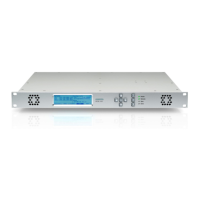RCS User Manual
78
Bellow the graph, you can see a list of the alarms generated. The alarms can be filtered by channel
using the dropdown list “Filter by channel”. By clicking on an alarm of the list, a window with detailed
information will be open.
The real-time spectrum of the channel that is being monitored is shown on the right of the graph, as
well as its measurements.
A table with the last measurements made in each channel is shown on the left of the graph, as well
as the information of each channel (modulation parameters, network name, etc). There is also a
button “Set POWER Reference Level” that establishes the limit of the power measurement below
which the fading alarm will be triggered. The new power reference level is the current power
measure.
If it is selected an IP input, the polling window looks like this:
On the left side of the screen there is a list of the channels that are being monitored and the IP
measurements, obtained in the last measurement of each channel, are displayed.
On the right side of the screen there is a list with the IP real-time measurements of the channel that
is being measured, as well as the bitrates of the channel.
On the center of the window, there is a graph of all the channels. The colors of the buttons depend
on the alarms: if a channel has an active alarm, the button shows the color of the alarm (red, yellow
or blue). If the channel doesn’t have any active alarm, the button may have two colors:
Green: there wasn’t any active alarm since the last time the alarms cache was deleted.
Purple: there isn’t any active alarm currently, but there was one active alarm at least, since the last
time the alarm cache was deleted.

